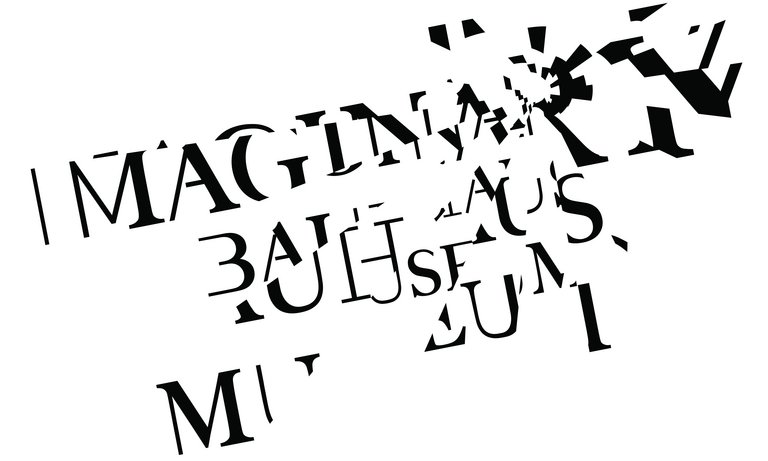Students, alumni and teachers of the international course are now picking up the momentum of research and experimentation in order to examine how the utopian opportunities of Bauhaus could be deployed for a future museum collection. The artists’ international profiles with their various biographies and cultural backgrounds are opening up numerous perspectives and methodologies.
Cansu Naz Tekir from Turkey’s performance of »Weimar in Weimar« installs a one-to-one copy of a building facade element from the Weimar-Nord prefabricated housing district on various facades of historic buildings in the city centre. By moving facade elements in the city, artists are questioning the city’s literal and metaphorical boundaries.
Minhee Ahn from South Korea made an interesting discovery during the course of her research: the urban landscape of the North Korean city Hamhung was largely shaped by the Bauhaus architect Konrad Püschel, who was head of the urban planning department from 1955 to 1958 and thus responsible for reconstruction during the post-war period. Against the backdrop of the Bauhaus connection between the cities of Weimar and Hamhung, the artist presents a fictitious travel agency. With tours, dances and food events in the museum and public areas, Minhee Ahn depicts a campaign for a city twinning that is an absurd proposition right from the outset given North Korea’s isolation.
In the additional MIND PALACES lecture series taking place every Tuesday from 9 April between 4 and 6 pm in the newly opened Bauhaus Museum and the Schiller Museum, young international students on the course will use performative formats to hold discussions with invited guests.
They will examine the current conflicts, paradoxes and contradictions of a complex society – an attempt to work with the public to activate Bauhaus’s invested values and utopias for the future. Moderators for the event series include cultural scholar Dr. Boris Buden.
IMAGINARY BAUHAUS MUSEUM began in 2015 as a long-term project and will continue beyond the anniversary year.
Opening:
Wednesday 3 April 2019, 6 - 10 pm
Duration:
3 April to 2 June 2019
Opening hours:
Tuesday to Sunday, 9:30 am to 6 pm
(Closed Mondays)
Programme opening:
› Welcome: Prof. Dr. Wolfgang Holler, Klassik Stiftung Weimar
› Welcome: Prof. Dr. Winfried Speitkamp, President of the Bauhaus-Universität Weimar
› Introduction: Prof. Danica Dakić, Bauhaus-Universität Weimar
› Performance of »Reading Manifesto« with students of the ‘Public Art And New Artistic Strategies’ master's course under the leadership of Dr. Sabine Folie
› Performance by pop star Grrropius
› Performance of Antonije Burić WITH OTHERS' HANDS in front of the Schiller Museum
Participating artists:
Minhee Ahn, Moawya Al Khadra, Elham Asadpour, Nathalia Azuero, Denise Rosero Bermúdez, Vanessa Brazeau, Vincent Brière, Nine Budde, Nicolas Buenaventura, Miguel Buenrostro, Antonije Burić, Suelen Calonga, María Constanza Carvajal, Ahram Chae, Vienne Chan, Julieta Ortiz de Latierro, Egemen Demirci, Lucía Diegó, Runze Feng, Adhika Ferdinand, Sophie Foster, Kathryn Gohmert, Pia Grüter, Devadeep Gupta, Katherin Gutiérrez, Anke Hannemann, Lucero Hernández, Sam Hopkins, Kavachi, Nikola Kekerović, Iva Kirova, Stefan Klein, Denise Lee, Asha Lester, Stefan Lesueur, Sujin Lim, Vasili Macharadze, María Paula Maldonado, Atsuko Mochida, Maayan Miriam Mozes, Hannes Neubauer, Matheus Opa, Mila Panic, Eleftheria Panousi, Yael Peri, Saman Pourisa, Iskin Yagmur Ruzgar, Paloma Sanchez-Palencia, Claire Seringhaus, Lena Skrabs, Nora Spiekermann, Natsumi Sugiyama, Saša Tatić, Edoardo Tedde, Cansu Naz Tekir, Daniel Theiler, Michael Usling, Farzane Vaziritabar, Ginna Alejandra Vélez Carrasco, Claire Waffel, Isaac Chong Wai, Maria Walcher, Ina Weise, Jakob Wirth, Sze Ting Joephy Wong
More information, details of the events, and the MIND PALACES lectures can be found at: www.imaginarybauhaus.com
IMAGINARY BAUHAUS MUSEUM is an artistic research exhibition series by the »Public Art and New Artistic Series« international master’s course at the Bauhaus-Universität Weimar’s Faculty of Art and Design, led by Professor Danica Dakić, Anke Hannemann, Ina Weise and Jirka Reichmann (coordinator) in conjunction with the Klassik Stiftung Weimar. The project is funded by the Thuringian State Chancellery and the Bauhaus-Universität Weimar Creative Fund.

